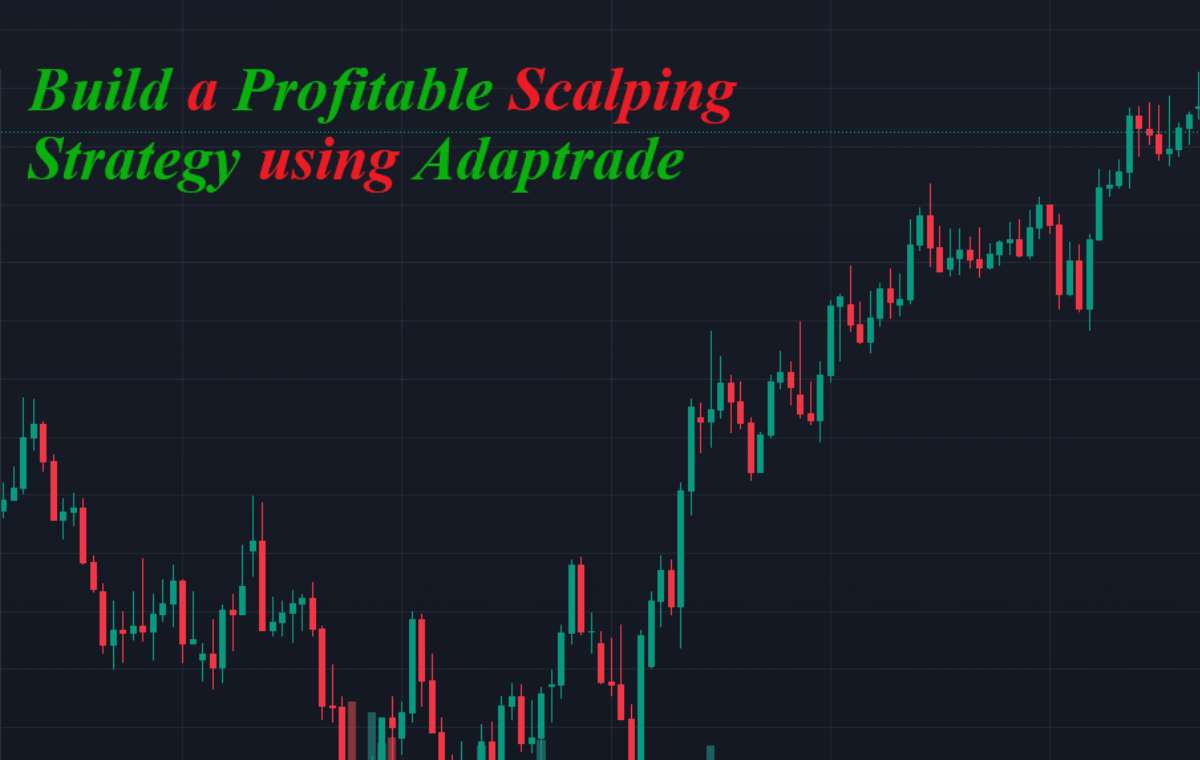Adaptrade is a powerful software tool that can be used to develop and test trading strategies for a variety of markets. One type of strategy that can be developed using Adaptrade is a scalping strategy, which involves making multiple small trades in a short period of time to profit from small price movements.
Building a scalping strategy using Adaptrade involves a few key steps, including selecting the appropriate market and timeframe, defining the entry and exit rules, and optimizing the strategy parameters.
In this guide, we will provide a detailed overview of how to build a scalping strategy using Adaptrade, so you can take advantage of short-term trading opportunities and maximize your profits.
What is Adaptrade?

Adaptrade is a software tool that is designed to help traders develop and test trading strategies for a variety of financial markets. The software uses a combination of advanced algorithms and machine learning techniques to identify profitable trading opportunities and optimize trading strategies.
Adaptrade allows traders to create and test custom trading strategies using historical market data, and then evaluate the performance of those strategies based on a range of metrics, such as profitability, risk, and drawdown.
Adaptrade is particularly well-suited for developing and testing automated trading systems, which can help traders take advantage of trading opportunities more efficiently and effectively.
The software is compatible with a range of trading platforms and can be used for a variety of markets, including stocks, futures, and forex. With Adaptrade, traders can rapidly prototype, test, and refine trading strategies, making it a valuable tool for both novice and experienced traders alike.
What Is Scalping?

In trading, scalping refers to a short-term trading strategy that involves making multiple trades in quick succession to take advantage of small price movements in the market. Scalping is often used in highly liquid markets, such as forex and futures, where prices can fluctuate rapidly and frequently.
In Adaptrade, a scalping strategy typically involves identifying short-term market inefficiencies and taking advantage of them using a set of predefined entry and exit rules. These rules are based on a variety of technical indicators, such as moving averages, price momentum, and support and resistance levels.
Scalping strategies developed using Adaptrade can be highly automated, with trades executed automatically based on pre-determined criteria. By testing and optimizing scalping strategies using Adaptrade, traders can increase the efficiency and profitability of their trading, while minimizing risk and exposure to market volatility.
Related: The Fascinating World of Cryptocurrency: What You Need to Know
How to Build A+Scalping Strategy Using Adaptrade?

Here’s a general process for building a scalping strategy using Adaptrade:
1. Define the market and timeframe: The first step in building a scalping strategy using Adaptrade is to select the market and timeframe you want to trade. This could be any liquid financial market, such as forex, futures, or stocks. You should also consider the timeframe that you want to trade, as scalping typically involves short-term trades lasting anywhere from a few seconds to a few minutes.
2. Define the entry and exit rules: Once you have selected the market and timeframe, the next step is to define the entry and exit rules for your scalping strategy. This could involve using a combination of technical indicators, such as moving averages, price momentum, and support and resistance levels, to identify short-term market inefficiencies and take advantage of them. You should also consider factors such as stop-loss and profit-taking levels to manage risk and maximize profitability.
3. Test and refine the strategy: After defining the entry and exit rules, you should use Adaptrade to test and refine the strategy using historical market data. Adaptrade allows you to backtest your strategy using real market data, so you can see how it would have performed in the past. You can then optimize the strategy by adjusting the parameters, such as the time intervals and thresholds used in the entry and exit rules until you achieve the desired results.
4. Evaluate the performance: Once you have optimized the strategy, you should evaluate its performance using a range of metrics, such as profitability, risk, and drawdown. Adaptrade allows you to view detailed reports on the performance of your strategy, so you can see how it stacks up against other strategies and make informed decisions about whether to use it in live trading.
5. Implement the strategy: Once you are satisfied with the performance of your scalping strategy, you can implement it in live trading. Adaptrade allows you to export your strategy as a trading system that can be used with a range of trading platforms, so you can automate your trades and take advantage of short-term trading opportunities. It is important to continue monitoring the performance of your strategy and making adjustments as needed to ensure ongoing success.
Conclusion
By selecting the appropriate market and timeframe, defining entry and exit rules, testing and refining the strategy using historical market data, and evaluating its performance based on a range of metrics, traders can increase the efficiency and profitability of their scalping strategy.
Adaptrade also allows traders to automate their trades, making it easier to take advantage of short-term trading opportunities and maximize profits. However, it is important to continue monitoring the performance of the strategy and making adjustments as needed to ensure ongoing success. With Adaptrade, traders can build and implement sophisticated scalping strategies that are tailored to their unique trading goals and preferences.
Read More: SpreeOwl is a modern media blogging website focusing on business, finance, technology, healthcare, entrepreneurship, leadership, and lifestyle.




